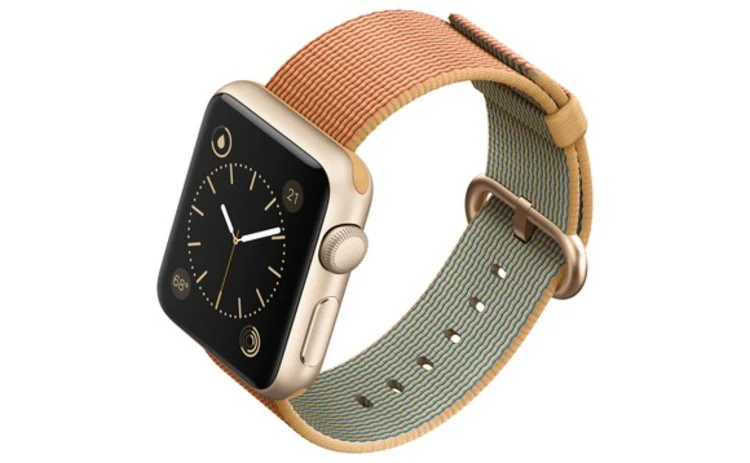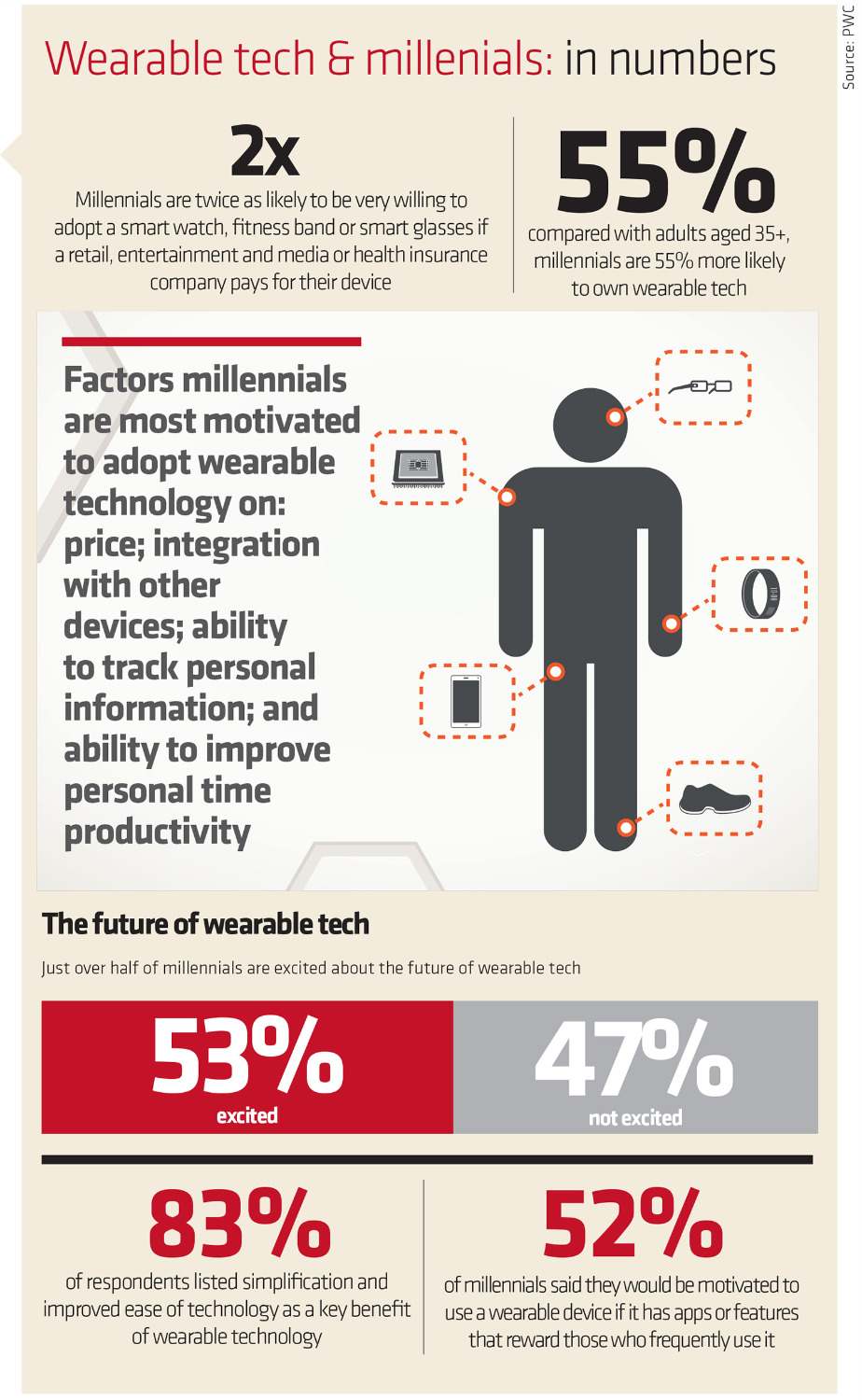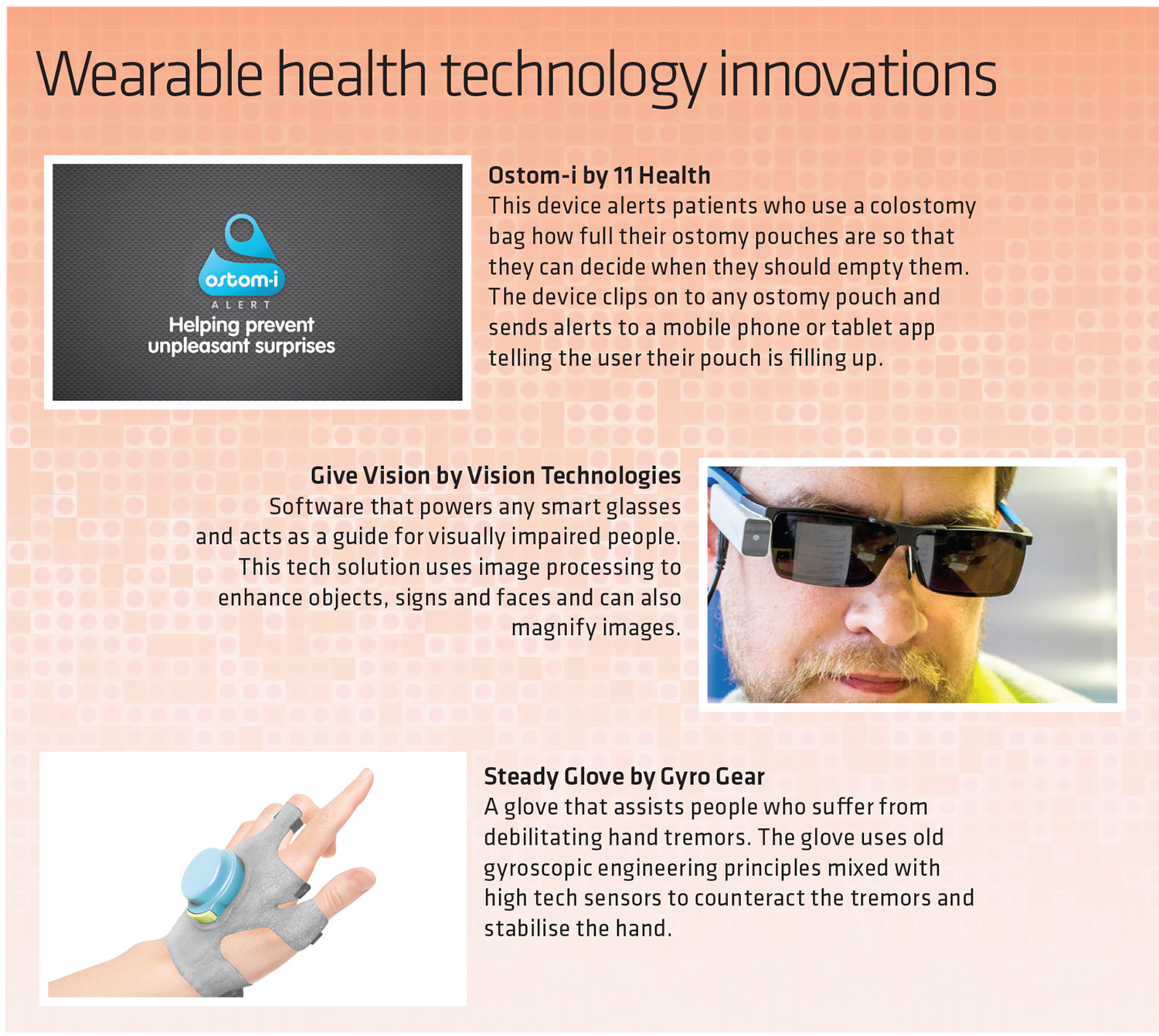
In Depth: Wearable Tech: More science fact than fiction, but is there a wearable future for insurers?

As wearable tech becomes more mainstream, what are the risks for the industry?
Over the past few years, there has been a rapid rise in the development and use of wearable technology to both help individuals manage a healthier lifestyle and cope with chronic conditions.
When Apple took the step of launching the Apple Watch in 2015, wearables became mainstream.
Recent innovations have included Lumo Lift by Lumo Bodytech and Ostom-i by 11 Health.
Lumo Lift is a posture-correcting device that clips under your collar and gently vibrates when it senses slouching. The sensor syncs with a smartphone to track hours of good posture, steps and calories.
Meanwhile, Ostom-i, a winner at the 2016 Axa PPP Health Tech & You awards, is a device that alerts patients who use a colostomy bag to how full their ostomy pouches are so they can decide when they should empty them. The device clips on to any ostomy pouch and sends alerts to a mobile phone or tablet app telling the user their pouch is filling up.
The increased popularity of these products has alerted the attention of insurers in the health and life market.
Richard Baddon, an insurance partner at Deloitte, said: “Insurers have recognised this is a good thing to link into and a good thing to encourage people to improve their lifestyle.”
In a recent You Gov survey for Deloitte, which polled the views of 654 UK health insurance customers, 40% said they would consider tracking and sharing their health and fitness data to get a more accurate premium.
Meanwhile, almost half (49%) said they would give their insurer more of their data if it meant they would get a discount on their health insurance.
However, while wearable technology may be popular, people are less likely to go to extremes. In a Twitter poll conducted by Post, an overwhelming majority of respondents (80%) would not consider having an implant to reduce their premium.
The benefits for insurers to get involved in wearable technology products are twofold.
“You can price the product in a way that reflects the underlying health,” Baddon said. “So you can give somebody a discount if you feel they’re working towards that discount.”
This is “a good thing” he said, as “you’re charging the right premium for the right risk”.
Insurers can also use these products to potentially increase the retention rate of policyholders.
“If people are paying a lower premium because you’re capturing the data and pricing the risk better, they’re more likely to then stay and renew their contract with you,” Baddon said.
The private medical insurance market is a big one, with over five million customers in the UK paying £3.6bn in premiums each year, according to the Association of British Insurers.
As a result, it is no surprise insurers are looking at ways for better engagement and results for their customers in this space. However, the use of wearable technology by insurers is currently sparse.

Rewarding behaviours
Vitality commercial director Nick Read claimed the firm is at present “the only insurer to use devices to both understand and reward our members’ health behaviours”.
“We first offered Vitality points for pedometer usage in 2006. Since then we’ve progressively extended the range of devices and wearables we award points for. These now include activity trackers, heart rate monitors, cycling computers, swim monitors and free exercise tracking apps on mobile phones.
“The data we obtain from the use of wearables is helpful, allowing us to look at the intensity of a workout as well as its distance or duration.
“Equally as important is that by looking at the wearable data we can see which rewards give members the most encouragement to get active, and we can adapt our programme accordingly.”
Vitality has a points system, where points can be earned by exercising while using a linked activity tracking device, which can be exchanged for discounts for flights and Eurostar tickets.
As the use of wearable technology increases, the risks associated with these products also become more apparent. One of the biggest concerns is around the sharing of personal information and data.
Security vulnerabilities
In a survey by PWC, 86% of consumers said wearable technology will make people vulnerable to security breaches and 82% said it will invade their privacy.
“People are always going to be concerned about their personal data and the use of their personal data,” Baddon said.
However, he added customers should take comfort from the fact insurers are used to dealing with sensitive data. “Insurers are ideally placed to use this type of information because they are regulated companies,” Baddon said.
“They’ve already got the infrastructure and security around them, where they look after a lot of personal data in any event.
“When this becomes more established and people can see how much they’re saving and how much of an improvement to the quality of life they’re getting out of it, it will be something that will break down that barrier of not wanting to share information,” he added.
Read echoed this: “We take data protection and cybercrime very seriously and ensure our members’ data is protected at all times.
“While we work with a range of partners to reward members for healthy behaviour, the member then has a direct relationship with the partner or app, and it is at their discretion whether they choose to share their data.
“As with all of our product and service providers, we continually look at the market to ensure we are providing the best and safest service to our members.”

Another risk associated with wearable technology is nderinsurance. With the cost of these products reaching high in the thousands, the need for insuring these products becomes paramount.
A Zurich spokeswoman said: “To prevent this underinsurance risk, brokers need to initiate the right conversations with their customers to ensure that the correct level of cover is applied.
“While customers may have personal possessions cover away from the home, brokers should advise additional protection for wearable technology where values are higher than the standard limits.”
The question that lies with insurers is: how much involvement will they have with these products and how willing will they be to cater to this demand?
Axa PPP healthcare head of digital content and marketing Richard Cooper said you have only got to look at the prevalent use of black boxes in the motor insurance industry to see insurers using technology to provide tailored premiums. And, in households, devices such as Hive are being used to monitor heating, while insurers are testing escape of water alert systems in the insuretech garages.
However, he added, whether the health or other insurance will go the same way is not yet known.
“It’s early days for the technology to impact the industry,” Cooper said. “We know there’s more to come and more than just fitness bands.”
Baddon said: “Trying to move this more into the mainstream and move it into something that’s a real discretionary purchase is quite important.”
Only users who have a paid subscription or are part of a corporate subscription are able to print or copy content.
To access these options, along with all other subscription benefits, please contact info@postonline.co.uk or view our subscription options here: https://subscriptions.postonline.co.uk/subscribe
You are currently unable to print this content. Please contact info@postonline.co.uk to find out more.
You are currently unable to copy this content. Please contact info@postonline.co.uk to find out more.
Copyright Infopro Digital Limited. All rights reserved.
As outlined in our terms and conditions, https://www.infopro-digital.com/terms-and-conditions/subscriptions/ (point 2.4), printing is limited to a single copy.
If you would like to purchase additional rights please email info@postonline.co.uk
Copyright Infopro Digital Limited. All rights reserved.
You may share this content using our article tools. As outlined in our terms and conditions, https://www.infopro-digital.com/terms-and-conditions/subscriptions/ (clause 2.4), an Authorised User may only make one copy of the materials for their own personal use. You must also comply with the restrictions in clause 2.5.
If you would like to purchase additional rights please email info@postonline.co.uk








